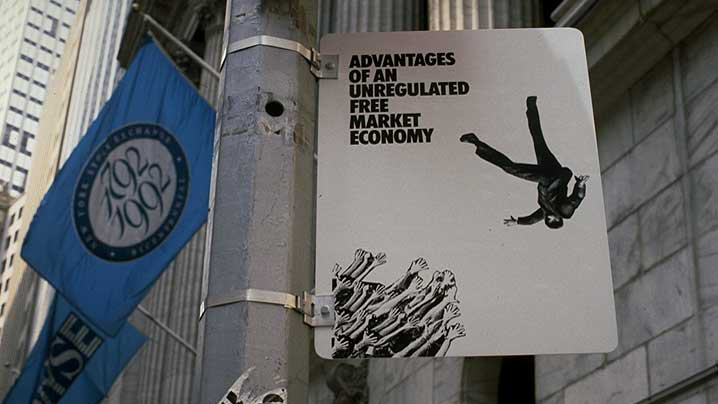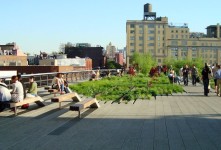The Dark Matter Of Repo History, HMS, & the 2nd Whiskey Rebellion

The Dark Matter Of Repo History, HMS, & the 2nd Whiskey Rebellion
The Dark Matter Of Repo History, Howling Mob Society, & the 2nd Whiskey Rebellion
Talks @ No-Space, October 14, 7:30 pm
With Greg Sholette, Shaun Slifer and Jim Constanzo
At the beginning of this series we announced plans to change the name of our venue from The Change You Want To See Gallery to No-Space. This week’s event offers us as good a time as any to formalize this, as the notion of the No-Space relates nicely to artist/theorist Greg Sholette’s description of Dark Matter.
No-Space is an aspect of architecture, a systematically overlooked invisible and absent variable that gives form to every structure. A room is made up of walls, a floor, a ceiling, and also the space in between. You can’t draw this space on its own, it’s nothing after all, but it’s something at the same time, one of the somethings that define a room.
In his forthcoming book Sholette describes a related concept of Dark Matter. In cosmology this unseen matter constitutes most of the universe. In terms of cultural production, an invisible world of artistic activity gives shape to the recognized art world. It has a gravitational pull and a power overlooked.
On Thursday we consider the role of dark matter as it applies to history and the city. Through interventions in urban space, art collectives Repo History, Howling Mob Society, and the Aaron Burr Society map excluded histories, radical readings of what is there but unseen. Ultimately these are cartographic projects, as architect Eyal Weizman suggests: geography as defining history in space. Through authorized and unauthorized means, they explore the exchange between media and the cityscape, between the past and the present, and a power that lurks in the shadows.
ABOUT THE PROJECTS
REPOhistory began in Manhattan in 1989 as a study group of artists, scholars, teachers, and writers focused on the relationship of history to contemporary society. It grew into a forum for developing public art projects based on history and a platform for creating them. For more than ten years REPOhistory’s goal was “to retrieve and relocate absent historical narratives at specific locations in the New York City area through counter-monuments, actions, and events”. Uncomfortable memories of New York’s half-forgotten past were written directly on the skin of a gentrified city using its own system of public signage. REPOhistory’s subject matter included workers, abolitionists, slaves, radicals, native Americans and children whose lives were lost in sweat shops and streets that ‘drank their tender tears.’ As global neoliberalism turned urban spaces into zones of managed consumption and ubiquitous surveillance, REPOhistory believed the battle for public memory had to be played out from within the city’s own repertoire of semiotic management. Eventually REPOhistory ran afoul of municipal and cultural authorities. By the end of the 1990’s its subaltern archive was slammed shut once more.
The Howling Mob Society was a collaboration of artists, activists and amateur historians who convened in 2007 with a commitment to unearthing stories neglected by mainstream history. HMS hoped to bring increased visibility to the radical history of Pittsburgh, Pennsylvania through a series of independently researched and installed historical markers with a focus on The Great Railroad Strike of 1877, a national uprising that saw some of its most dramatic moments in our city. While the mainstream media—both past and present—frame events in terms of their effect on national economic interests, the Howling Mob investigated history through the experiences of common, working people.
The 2nd Whiskey Rebellion is the Aaron Burr Society’s latest public artwork designed to expose the Myth of the Free Market and rewrite American history. The original Whiskey Rebellion of 1794 was a referendum on the Constitution and its two-tiered economic system that privileged Alexander Hamilton’s northeastern oligarchy and Thomas Jefferson’s southern plantations. Prior to the 2nd Whiskey Rebellion, the Aaron Burr Society initiated the Free Money Movement by spending paper currency stamped “Slave of Wall Street” on one side and “Free Money” on the other. Both the Whiskey Rebellion and the Free Money Movement are not metaphorical but symbolic. By this we mean that it is not “like” or “as” a rebellion but a symbol for a revolt against Wall Street, Oil, Coal and their corporate cronies to save the planet.
ABOUT THE PRESENTERS
Gregory Sholette is a New York-based artist, writer, and founding member of REPOhistory (1989-2000) and Political Art Documentation/Distribution (PAD/D: 1980-1988). His recent installations include “Mole Light” at Plato’s Cave/Eidia House in Williamsburg, Brooklyn (October 2010), and “The Imaginary Archive” at Enjoy Public Art Gallery, Wellington New Zealand (June – July 2010). Recent publications include Dark Matter: Art and Politics in an Age of Enterprise Culture (Pluto Press, Nov. 2010); Collectivism After Modernism: The Art of Social Imagination after 1945, with Blake Stimson (University of Minnesota, 2007), The Interventionists: A Users Manual for the Creative Disruption of Everyday Life, with Nato Thompson (MassMoCA/MIT Press, 2004, 2006, 2008), and a special 2008 issue of Third Text co-edited with theorist Gene Ray on the theme Whither Tactical Media. Sholette is an Assistant Professor of Sculpture at Queens College: City University of New York (CUNY), a visiting faculty member of the Department of Visual and Environmental Studies, Harvard University (Spring 2010), and he teaches an annual seminar in theory and social practice for the CCC post-graduate research program at Geneva University of Art and Design.
Jim Costanzo is an artist and educator based in NYC. He was a founding member of the artist collective REPOhistory and has continued working on social engaged art practices individually and with the Aaron Burr Society. His artwork has been shown internationally including at the 2006 Whitney Biennial and the Museo Reina Sofia, Madrid. Recently his artwork led him to Pittsburgh to research the original Whiskey Rebellion of 1794 and he did a residency at Carnegie Mellon University’s Studio for Creative Inquiry. He currently teaches at Pratt Institute.
Date
October 14, 2010



